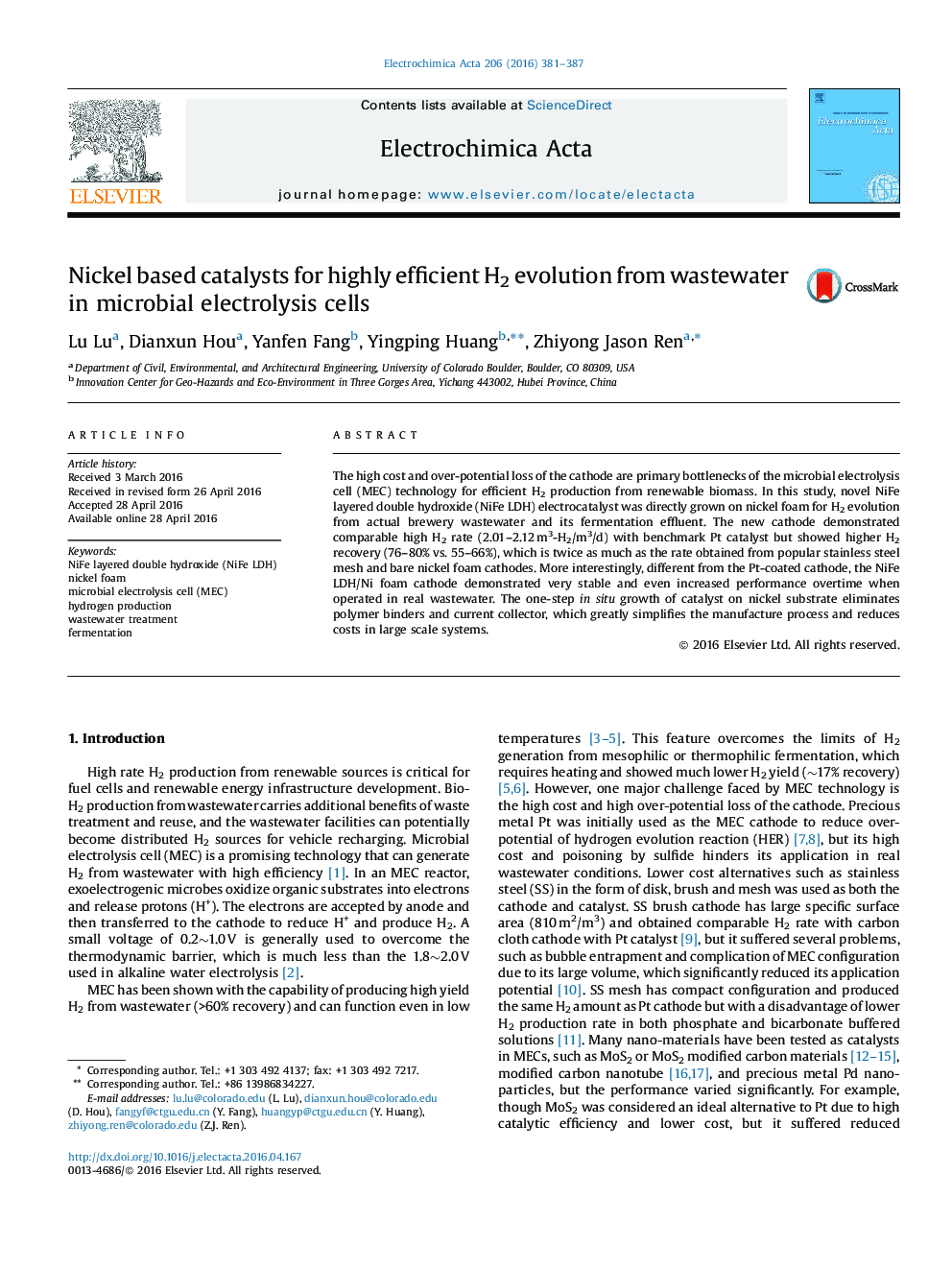| Article ID | Journal | Published Year | Pages | File Type |
|---|---|---|---|---|
| 6607349 | Electrochimica Acta | 2016 | 7 Pages |
Abstract
The high cost and over-potential loss of the cathode are primary bottlenecks of the microbial electrolysis cell (MEC) technology for efficient H2 production from renewable biomass. In this study, novel NiFe layered double hydroxide (NiFe LDH) electrocatalyst was directly grown on nickel foam for H2 evolution from actual brewery wastewater and its fermentation effluent. The new cathode demonstrated comparable high H2 rate (2.01-2.12Â m3-H2/m3/d) with benchmark Pt catalyst but showed higher H2 recovery (76-80% vs. 55-66%), which is twice as much as the rate obtained from popular stainless steel mesh and bare nickel foam cathodes. More interestingly, different from the Pt-coated cathode, the NiFe LDH/Ni foam cathode demonstrated very stable and even increased performance overtime when operated in real wastewater. The one-step in situ growth of catalyst on nickel substrate eliminates polymer binders and current collector, which greatly simplifies the manufacture process and reduces costs in large scale systems.
Keywords
Related Topics
Physical Sciences and Engineering
Chemical Engineering
Chemical Engineering (General)
Authors
Lu Lu, Dianxun Hou, Yanfen Fang, Yingping Huang, Zhiyong Jason Ren,
